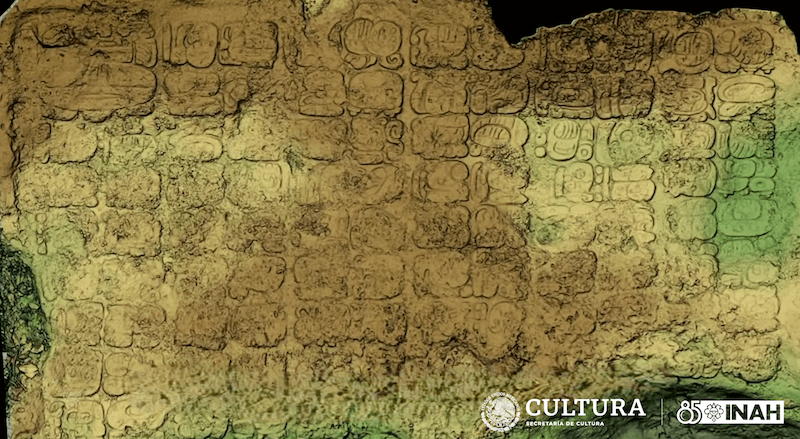Maya glyphs on the stelaINAH
Posted on 08/16/2024 11:13:13 PM PDT by SunkenCiv
Mexico News Daily reports that a stela measuring more than 36 feet long has been discovered in the Cobá archaeological zone in the eastern Yucatán Peninsula. Glyphs carved into the stone describe the founding of the Maya settlement of Keh Witz Nal, or Deer Mountain, on May 12, A.D. 569, according to a preliminary analysis of the text conducted by researchers from Mexico's National Institute of Anthropology and History (INAH). The text also names K'awiil Ch'ak Chéen, a previously unknown ruler of Cobá, and confirms that rulers often adopted the name of the god K'awiil, a protective deity associated with abundant harvests and meteorological phenomena. Researchers are working to conserve the stela, which has been damaged by standing water.
Maya glyphs on the stela
INAH

(Excerpt) Read more at archaeology.org ...
Riviera Maya News reports that two stucco benches discovered last year in the Yucatán Peninsula, near the Chakanbakán Archaeological Zone, have been restored by researchers from Mexico's National Institute of Anthropology and History (INAH) at the Chetumal Restoration Laboratory. Felix Camacho Zamora of the Conservation Area of the Maya Train Archaeological Rescue Project said that the benches, which are made up of a base with three upper sections constructed in four stages, have been dated to the Late Classic period, between A.D. 600 and 900. The first bench measures about 10 feet long and is decorated with three anthropomorphic figures wearing loincloths and a garment over their shoulders. Some geometric figures in black on the upper part of the bodies may have been intended to simulate fabric, explained restorer Kara Mora Yerena. She suggested that the figures may have been associated with funeral rituals. The second bench is L-shaped and faced with rectangular stones and red polychrome stucco. Scientists also determined that salts on the surface of the stucco had caused some deterioration of the materials. Protective edging and lime grout injections were applied to the benches to stabilize the modeled stucco decorations. The laboratory work and study of the benches' iconography continues.
Close-up of stucco bench from Mexico's Chakanbakán Archaeological ZoneAketzalli Morán González/INAH
“She suggested that the figures may have been associated with funeral rituals.”
And I suggest it is a symbol of a man taking a dump signifying a public restroom.

If it burns going in...
Sounds great!
Disclaimer: Opinions posted on Free Republic are those of the individual posters and do not necessarily represent the opinion of Free Republic or its management. All materials posted herein are protected by copyright law and the exemption for fair use of copyrighted works.